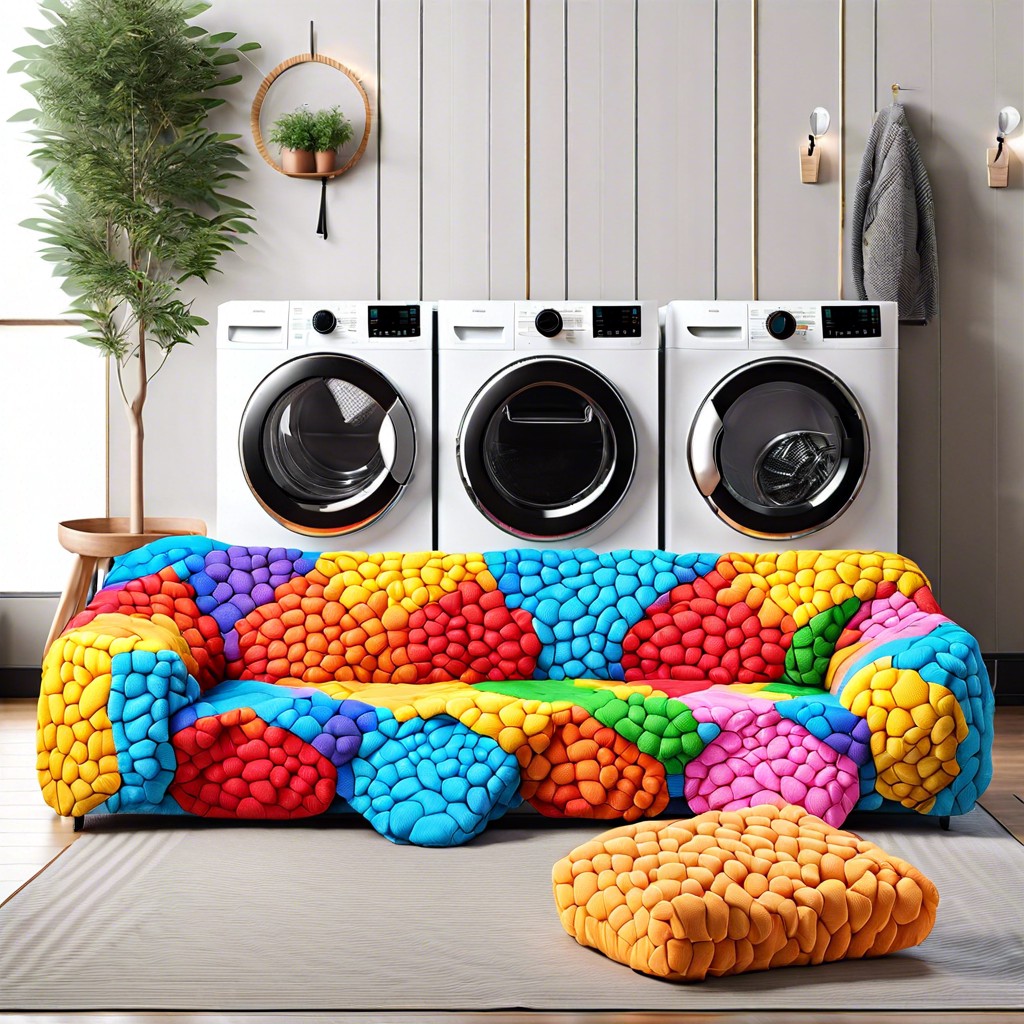Last updated on
Learn how to effectively wash throw pillows to keep them fresh and extend their lifespan.
Key takeaways:
- Wash throw pillows every 3-6 months, or more frequently if needed.
- Check manufacturer’s label for washing instructions, water temperature, detergent type, drying procedures, and bleach usage.
- Machine wash removable covers, hand wash delicate covers.
- Spot clean non-removable covers, use stain remover and mild detergent with water.
- Fluff pillows daily, vacuum weekly, use pillow protectors and lint rollers.
Table of Contents
How Often to Wash Throw Pillows
To maintain freshness, aim to wash decorative throw pillows every three to six months. This frequency can increase if the pillows are subjected to heavy use, or if they are located in a high-traffic area of your home.
Additionally, households with pets, children, or allergy sufferers may benefit from more frequent cleanings to remove pet hair, dander, and common allergens.
Seasonal cleaning is also an excellent way to keep your pillows in top condition—consider washing them with the change of each season to keep up with routine care.
Check the Manufacturer’s Label
Before proceeding with any cleaning method, locate the care instructions provided by the manufacturer. These guidelines are crucial as they specify the appropriate cleaning techniques for the material in question, ensuring the pillow’s longevity and aesthetic.
Points to consider include:
- Washing Instructions: Look for symbols or explicit directions indicating whether the throw pillow is machine washable or if it requires hand washing.
- Water Temperature: The label may advise on the suitable water temperature for washing, which can range from cold to warm to maintain the fabric’s integrity and color.
- Detergent Type: Some materials may need a gentle detergent or specify a particular kind. Adhering to these recommendations can prevent damage to the fabric.
- Drying Procedures: Insight on proper drying techniques will be mentioned, whether it’s air-drying, tumble drying on a specific setting, or avoidance of heat sources.
- Bleach Usage: Confirm if bleach is permitted. It is often discouraged as it can degrade fabric fibers and fade colors.
It’s imperative to follow these instructions closely as the wrong cleaning method can lead to shrinkage, discoloration, or disintegration of the pillow. If the label is missing or illegible, opt for the gentlest cleaning option as a precaution.
Removable Cover Cleaning Process
Before washing, unzip or unbutton the cover and gently remove it from the pillow insert; take care not to damage any stitching. Turn the cover inside out to protect any decorative elements and check for any care instructions on the tag.
If the cover is made of cotton, linen, or polyester, it is likely machine washable. Use a mild detergent and set your washing machine to a gentle cycle with cold water to prevent shrinkage or bleeding colors.
For covers with intricate details or fragile fabrics like silk, hand washing with a gentle cleanser is advisable. After washing, gently squeeze out excess water. Avoid wringing delicate fabrics as this can cause damage.
Lay the cover flat to air dry or tumble dry on a low heat setting if the care label permits. Iron or steam out any wrinkles if necessary, ensuring the temperature aligns with the fabric type to avoid damage.
Reattach the clean cover to its pillow insert once completely dry, ensuring it retains its shape and comfort.
Non-removable Cover Cleaning Process
For pillows with non-removable covers, gentle spot cleaning is typically the safest approach. Here’s how to tackle the task effectively:
1. Identify the type of fabric and adhere to any specific care instructions provided by the manufacturer.
2. Use a stain remover appropriate for the pillow material, applying it only to the affected areas. Test on an inconspicuous spot first to ensure colorfastness.
3. Dab the spot with a damp cloth rather than rubbing, which may damage the fabric fibers.
4. Mix a mild detergent with water for general cleaning, apply with a soft brush in a circular motion, and then wipe clean with a wet cloth.
5. For pillows that can handle water, you can lightly spray them with a fabric-safe cleaner and then air dry thoroughly.
6. If the pillow is filled with materials that can’t get wet, such as down, consider using a vacuum with an upholstery attachment to remove dust and allergens.
Remember not to saturate the pillow, and always allow it to dry completely before using it again to prevent mold and mildew growth.
Maintenance Tips to Keep Throw Pillows Clean Longer
To prolong the freshness of your throw pillows, give them a daily fluffing to maintain their shape and remove dust. Additionally, every week, vacuum the pillows with an upholstery attachment to minimize dirt accumulation.
Investing in pillow protectors is a savvy move; they serve as an extra barrier against spills and can be washed easily. For homes with pets, lint rollers are effective in picking up hair and dander that inevitably collects on fabric surfaces.
Lastly, avoid eating or drinking near your decorative pillows to prevent potential stains. With consistent care, not only will your throw pillows stay cleaner, but their lifespan will also be extended.
You may also like to read:

